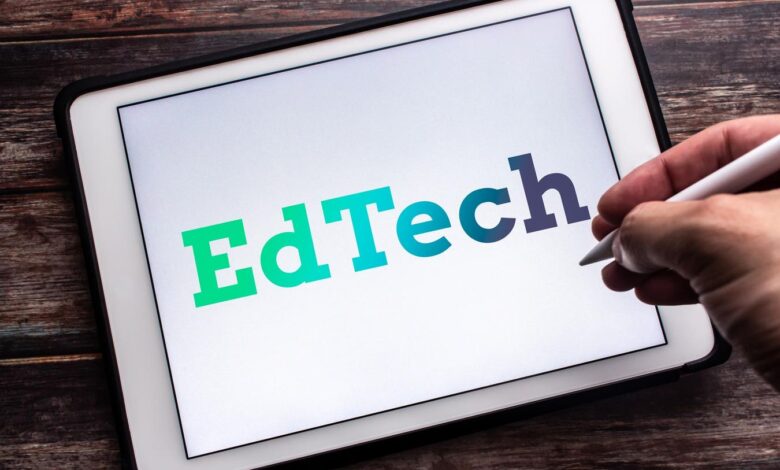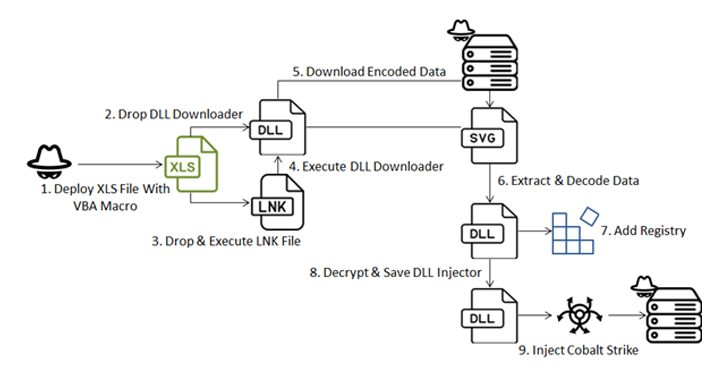Advancing Cybersecurity In Digital Education

Closeup keyword EdTech (EduTech, Educational technology) on tablet.
As technology seamlessly integrates into every facet of our lives, the education sector, or EdTech, has kept pace. The proliferation of digital learning tools and platforms has transformed the educational landscape, offering unparalleled access to knowledge and learning resources. However, This digital transformation comes with its own challenges, notably in cybersecurity. The importance of protecting digital platforms against malicious attacks cannot be overstated, as these platforms hold sensitive data on students, faculty, and the institutions themselves.
Manit Kaushal, CTO & Co-founder of UPI Study, a pioneering online education platform, shares his insights on the pressing need for enhanced data safety. ‘The digital realm of education is a treasure trove of personal information, making it a prime target for cybercriminals. Data privacy concerns are at the forefront of cybersecurity challenges in EdTech, with risks ranging from identity theft to financial fraud,’ Manit asserts. ‘Protecting the personal and financial information of students and educators is not just a matter of privacy but of trust and safety within the educational system.
Challenges in Implementing Cybersecurity Measures
EdTech platforms are susceptible to various cyber threats, including phishing attacks, ransomware, and data breaches. Phishing attacks deceive individuals into providing sensitive information, while ransomware locks access to vital data, demanding payment for its release.
According to recent surveys, the education sector has reported the highest rates of ransomware attacks compared to all other industries surveyed. In the 2023 survey, 80% of lower education providers and 79% of higher education providers disclosed that they had been impacted by ransomware attacks, marking a significant increase from 56% and 64%, respectively, in the 2022 survey. Ransomware attacks result in data breaches and the exposure of confidential information, leading to substantial privacy and security implications. The disclosure of sensitive data not only undermines the privacy of students and faculty but also compromises the security infrastructure of educational institutions.
Implementing effective cybersecurity measures in EdTech is not without its challenges. Budget constraints and resistance to change can hinder the adoption of necessary security protocols, underscoring the need for strategic planning and stakeholder engagement.
Security Best Practices for Students and Educators
Protecting EdTech platforms requires a multifaceted approach. Implementing strong, unique passwords, ensuring proper user access rights, conducting regular software updates and backups, as well as fostering a culture of security through training and awareness programs, are fundamental steps in protecting against modern cyber threats.
These measures were successfully implemented by UPI Study, an innovative EdTech platform that offers online college credit courses to students. This enables them to transfer up to 60 college credits towards a degree program in the US and Canada, making higher education more accessible and affordable.
At UPI Study, both students and educators play a significant role in maintaining cybersecurity. Beyond the measures mentioned above, they adopt secure browsing habits, use VPNs, and exercise caution when sharing personal information. UPI Study’s commitment to cybersecurity is evident through its accreditation and the solid security protocols it employs to safeguard user data.
It is also important for any organization to understand how to respond to a cybersecurity incident. Immediate steps to contain the breach, along with long-term strategies for recovery, can mitigate the impact of cyber-attacks on educational institutions. In such situations, having a detailed incident response plan with clear roles outlined for all participants is essential.
Ensuring the safety of financial transactions and the security of financial data is paramount. The integration of modern payment systems is a reliable and convenient option for educational platforms. These systems must comply with regulatory bodies such as the Financial Conduct Authority (FCA) in the UK, the Consumer Financial Protection Bureau (CFPB) in the US, the Financial Consumer Agency of Canada (FCAC), and the European Banking Authority (EBA) in the EU. FinTech services, like Payrow, utilize modern technologies to conduct thorough checks on counterparties and provide transaction monitoring. This approach facilitates a secure and smooth financial transaction process for both educational platforms and their users, simplifying and speeding up processes compared to traditional banks while ensuring trust and compliance are maintained.
Once complex security measures are in place, it is important to conduct regular security audits to identify vulnerabilities within EdTech platforms. These audits facilitate continuous improvement in cybersecurity measures, ensuring the protection of sensitive data.
The Role of AI and Machine Learning in Enhancing EdTech Security
Artificial Intelligence and Machine Learning are revolutionizing cybersecurity in EdTech. These technologies enable predictive analytics for early threat detection and automate security protocols, significantly enhancing the ability to defend against cyber-attacks.
The rise of AI in education introduces an additional layer of complexity to cybersecurity. While AI can personalize learning experiences and streamline administrative tasks, it also raises concerns about data privacy and the ethical use of technology. ‘As we integrate more AI into our platform, we are also scaling up our cybersecurity efforts,’ says Manit. ‘It is about finding the right balance between innovation and privacy, ensuring that our use of AI enhances the learning experience without compromising security.’
Legal and Regulatory Considerations
The legal landscape of cybersecurity in EdTech is multifaceted, requiring institutions to adhere to both educational standards and privacy laws, including the General Data Protection Regulation (GDPR). Effective navigation of these regulations is essential for ensuring security and privacy compliance. Additionally, government support plays a pivotal role in strengthening cybersecurity in EdTech. By allocating funds for cybersecurity initiatives and establishing supportive policies, governments facilitate the creation of secure digital education environments.
Conclusion
Cybersecurity in EdTech is a dynamic and critical field that demands ongoing attention and adaptation. Protecting digital education platforms is crucial for safeguarding the privacy and security of students and educators alike. As EdTech continues to evolve, insights from leaders like Manit Kaushal will be invaluable in shaping a secure, accessible, and innovative educational future. The advancement of cybersecurity in EdTech will likely involve the integration of emerging technologies and the development of new strategies to protect digital education platforms. Constant innovation and adaptation are vital to stay ahead of cybercriminals.



